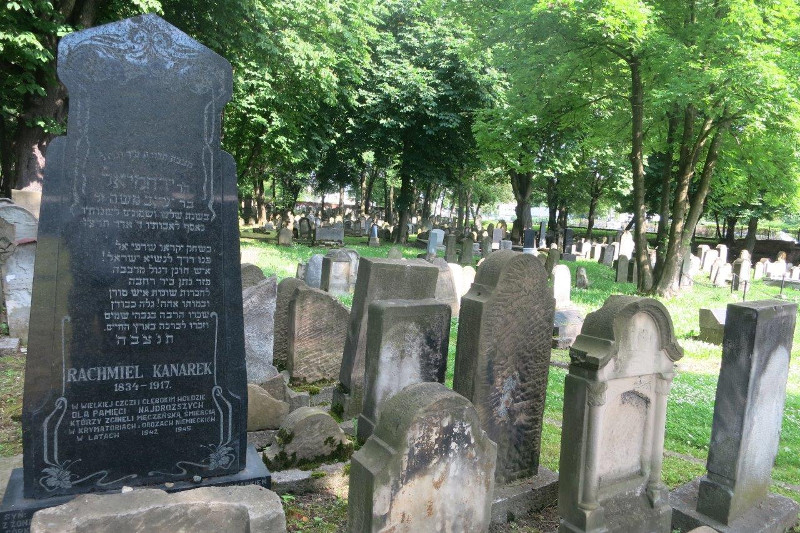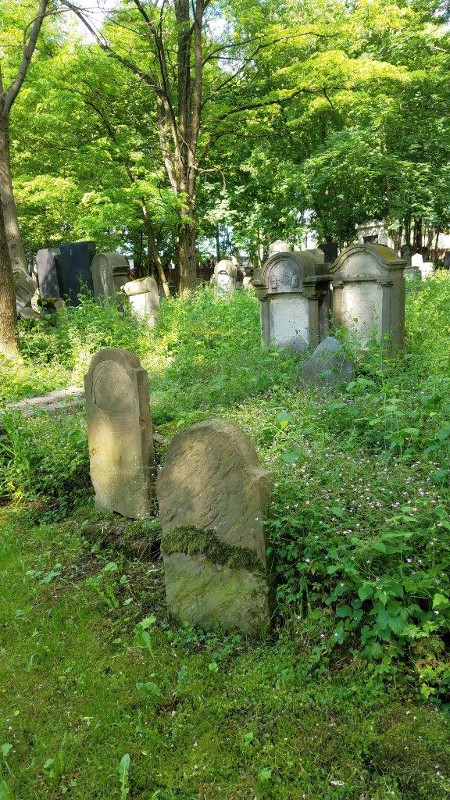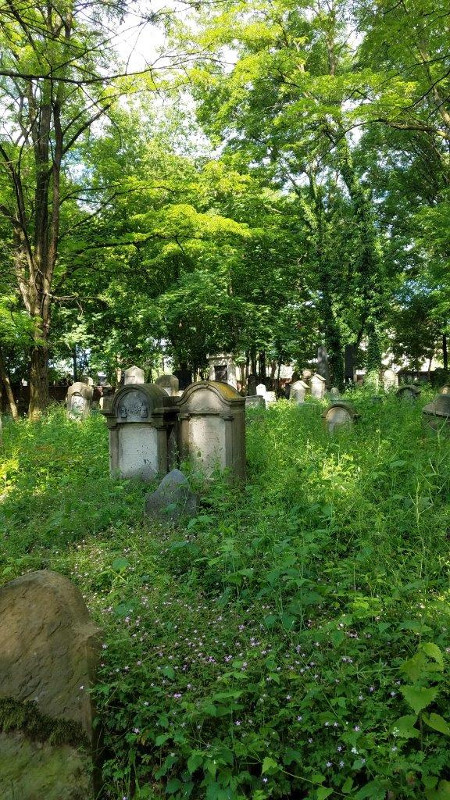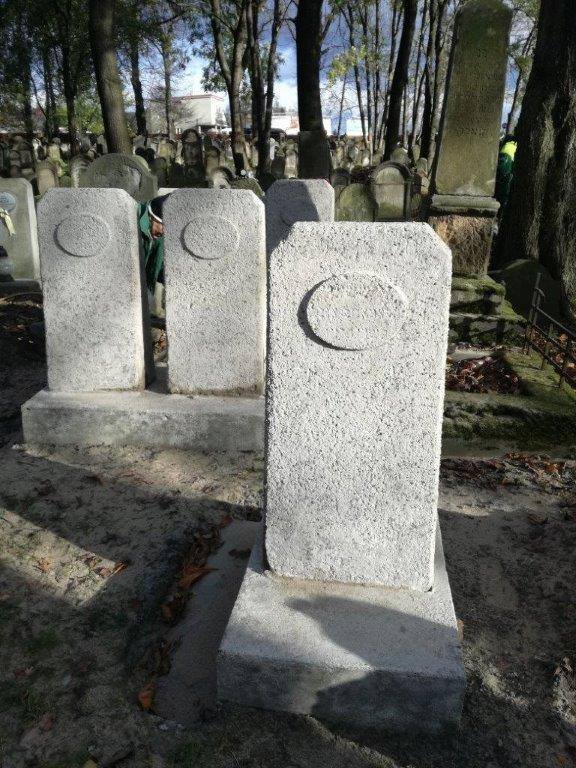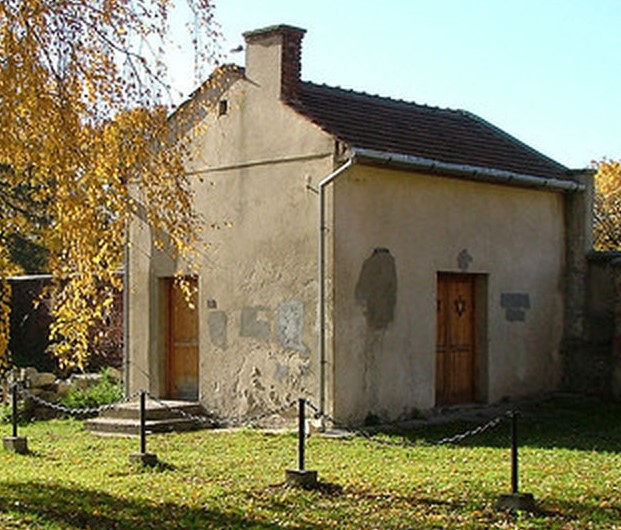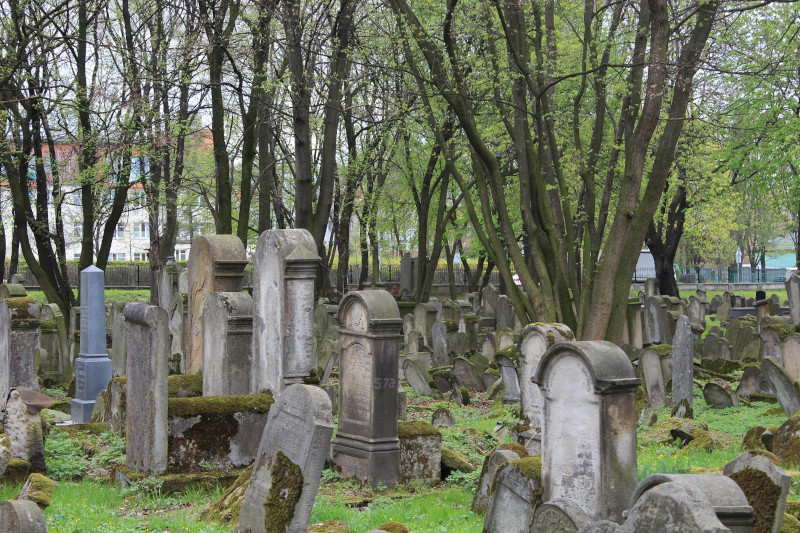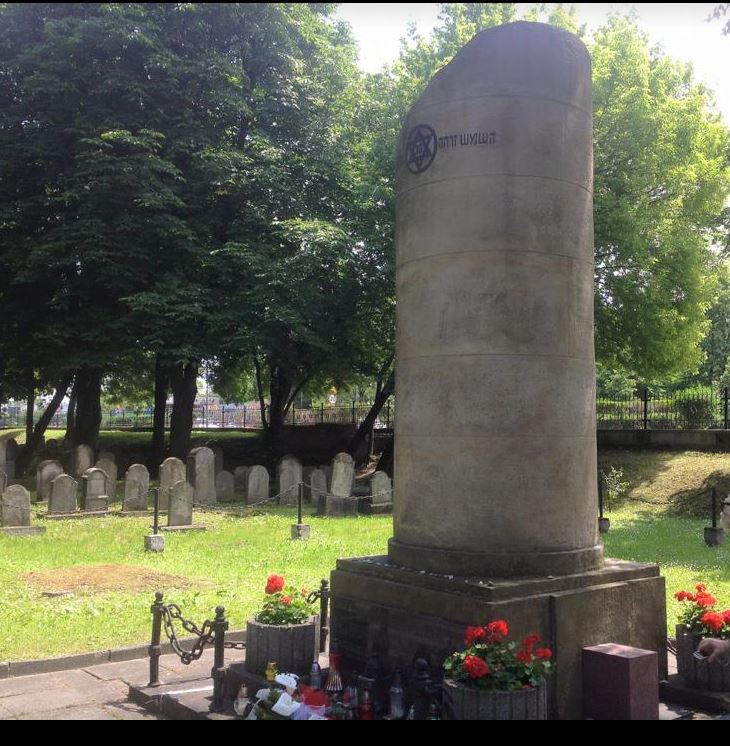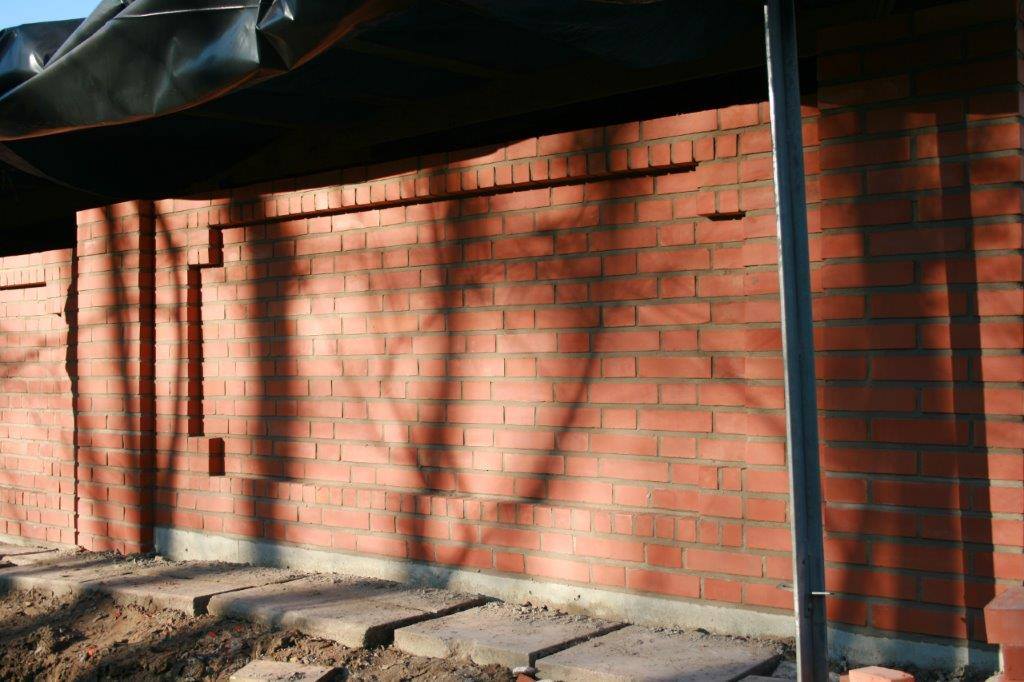 Alternate names: Tornow, Tarnawa Kro?nie?ska, Turnow, Torne/Tarne [Yid]. 51�55' N 15�09' E, 249.2 miles W of Warszawa. This city in SE Poland with 116,109 inhabitants (urban area 215 000 inhabitants) in 2008 in Lesser Poland Voivodeship since 1999, but from 1975 to 1998� the capital of the Tarn�w Voivodeship and a major rail junction, located on the strategic east-west connection from Lviv to Krak�w. [July 2009]
Alternate names: Tornow, Tarnawa Kro?nie?ska, Turnow, Torne/Tarne [Yid]. 51�55' N 15�09' E, 249.2 miles W of Warszawa. This city in SE Poland with 116,109 inhabitants (urban area 215 000 inhabitants) in 2008 in Lesser Poland Voivodeship since 1999, but from 1975 to 1998� the capital of the Tarn�w Voivodeship and a major rail junction, located on the strategic east-west connection from Lviv to Krak�w. [July 2009]
�
CEMETERY: Founded in 1583 on ul Szpitalna, the 3.2-ha cemetery is one of the oldest and largest in southern Poland. The site includes thousands of intact graves, including sarcophagi existing beside traditional gravestones and obelisk monuments. During the war, some destroyed Jewish cemetery gravestones were used to pave the roads and make sidewalks, and matzevot fragments are visible in support walls and around the building of the Polish post office. After the war, Jewish life returned to Tarnow with the establishment of a community of Jewish Holocaust survivors and those returning from the Soviet Union. A committee for the care of Jewish residents was formed. On June 11, 1946, on the anniversary of the mass murder of Tarnow Jews in the cemetery, a monument on the site of the mass grave was unveiled. The designer of the monument was a young sculptor and survivor named David Becker (died Israel, 1991), who used one of the damaged columns from the New Synagogue. He brought the column to the cemetery clandestinely with the help of other survivors and cut the top off at a ragged angle to remember those whose lives were tragically cut short in the Shoah. The inscription on a plaque affixed to the stark column states that on that site 25,000 Jews were killed by the Germans in the cemetery on May 5, 1942. The Hebrew inscription quotes the poet Hayyim Nahman Bialik, "But sun shone and it was not ashamed". Some survivors settled in Tarnow and raised families there. Burials continued in the cemetery until 1993. Jews dying in the post-war years were buried on the paths in the cemetery to ensure that pre-existing graves without gravestones were not desecrated.
�
In 1976, the cemetery was landmarked. In 1988, the Committee for the Protection of Monuments of Jewish Culture was formed to protect sites of Jewish interest and to remember the Jewish heritage of Tarnow. The Committee was based in Tarnow and headed by Adam Bartosz, the director of the Regional Museum and a local expert on Jewish life. Under his auspices, a new cemetery wall was compleyted in the 1990s and the Beit tahara was restored through a family donation. Caring for the cemetery was difficult because of its large size and the limited resources available. Over the years, the cemetery filled with overgrown foliage, weeds, leaves and other debris making many areas inaccessible. Some gravestones deteriorated and toppled. The Jewish Community in Krakow is the owner of the cemetery and they fund a part time caretaker. For the last 10 years, Tarnow provides trusted convicts from the local prison to help with the upkeep of the cemetery every summer.
�
In 1991, the Polish government donated the cemetery�s original forged gate from the 1840�s to the US Holocaust Museum in Washington DC. The new gates are an exact replica with an informational plate affixed. The keys to the locked cemetery gates are stored in the Regional Museum District.
�
There remained much interest in the cemetery despite its deterioration. Around 2000, the monograph "The Jewish Cemetery in Tarn�w" by Professor Leszek Hondo, a professor at the Jagiellonian University was written. In 2007, two historians from Tarnow wrote a guide to the cemetery entitled �Tarnow�s Jewish Cemetery�. The guidebook details many graves including those of famous rabbis and local influential families. The oldest preserved gravestone dates from the late 17th century. Graves of well-known Tarnow families like Maschler, Merz, Szancer, Aberdam, Br�ndstatter, as well as several rabbis like Szmelke Samuel Horowitz (d. 1713), Izak Ajzyk (d. 1756), Itzhak Ben Elezer (d. 1811), Israel Rapaport (d. 1881), Abel [?] (d. 1917), and Arak Majer (d. 1925) can be seen again. On the east side, surrounded by concrete walls, Arie Leib, descendant of the famous tzaddik Halbersztam, Ezekiel Szragi from Sieniawa, is buried here, a Chasidic pilgrimage site. In the SE part of the cemetery is the WWI military cemetery for 43 Austrian Jewish soldiers, who died from combat wounds and disease in Tarnow hospital from 1914-1917. This is one of thirteen Jewish WWI military cemeteries in Galicia. The small plaques affixed to the graves list the name and date of death of the soldier except for that of Joseph Steiner, whose family replaced the entire stone after WWI. Other families have restored their ancestors� gravestones and gravesites, including the Szancer family plot.
�
In 2014, the Committee for Protection of Monuments of Jewish Culture established a Facebook page, Jewish Tarnow, to bring together families with roots in Tarnow. Its major agenda was to support efforts for upkeep and restoration in the Jewish Cemetery and share information and pictures allowing families to better understand the history of the cemetery where their ancestors are buried. Genealogy roots tourism brings families with ancestry in Tarnow to the cemetery every year. In 2016, a project conducted by Professor Hondo and (Peter) students in the cemetery resulted in the restoration and documentation of 100 gravestones. The information is available in a booklet that was written about the effort called �Stone and Memory: The Jewish Cemetery in Tarnow�.
�
UPDATE: The chairman of the Committee for the Protection of Monuments of Jewish Culture and Tarnow Jewish historian, Adam Bartosz, received an EU grant for the restoration of the cemetery which will take place between 2018-2019. The grant will cover preservation of the cemetery, a new brick wall enclosing the cemetery, new gates, and walkways, restoration of the beit tahara, new lighting and removal of the extensive overgrowth, vegetation and debris, making the cemetery totally accessible to visitors. New informational and educational signboards will be erected. The restoration will include an index of the gravestones and a virtual map of their location in the cemetery.
UPDATE:
The cemetery dating from the sixteenth or seventeenth century underwent restoration including the restoration and indexing of about 3,000 gravestones, repair and rebuilding of its wall, and a permanent exhibition installed in the former pre-burial hall.The oldest legible gravestone data from 1688. Registered as a national landmark in 1976, restoring, clearing, and maintaining the cemetery began in the late 1980s. [July 2019] https://jewish-heritage-europe.eu/2019/06/28/poland-jewish-cemetery-in-tarnow/
BOOK: Gruber, Ruth Ellen. Jewish Heritage Travel A Guide to East-Central Europe. New York: John Wiley & Sons, Inc., 1992. p. 66-67
Guidebook: TARNOW�S JEWISH CEMETERY by Adam Bartosz and Janusz Koziol https://www.scribd.com/document/98803760/Tarnow-Cemetery
Stone and Memory. The Jewish Cemetery in Tarnow. https://drive.google.com/file/d/0BxqHbCHAlXC2SFdWY0V5Um9ZWkk/view
CONTACT INFORMATION: Tarnow Committee for the Protection of Monuments of Jewish Culture e-mail: This email address is being protected from spambots. You need JavaScript enabled to view it.. ADAM BARTOSZ e-mail: This email address is being protected from spambots. You need JavaScript enabled to view it.
WEBSITES: www: http://jewishtarnow.blogspot.com/ and Jewish Tarnow Facebook page.
�
Photos by This email address is being protected from spambots. You need JavaScript enabled to view it. [2014]
�
Photos courtesy This email address is being protected from spambots. You need JavaScript enabled to view it. [July 2015]
�
�
[UPDATE] Photos by Charles Burns [April 2016]
�
Photos courtesy Roger Lippman [June 2017]
�
Photos from Facebook/Jewish Cemetery in Tarn�w - Renovation 2017-18 [January 2018]
[UPDATE] Wall renovation 2018 - Facebook [June 2018]
�
�







